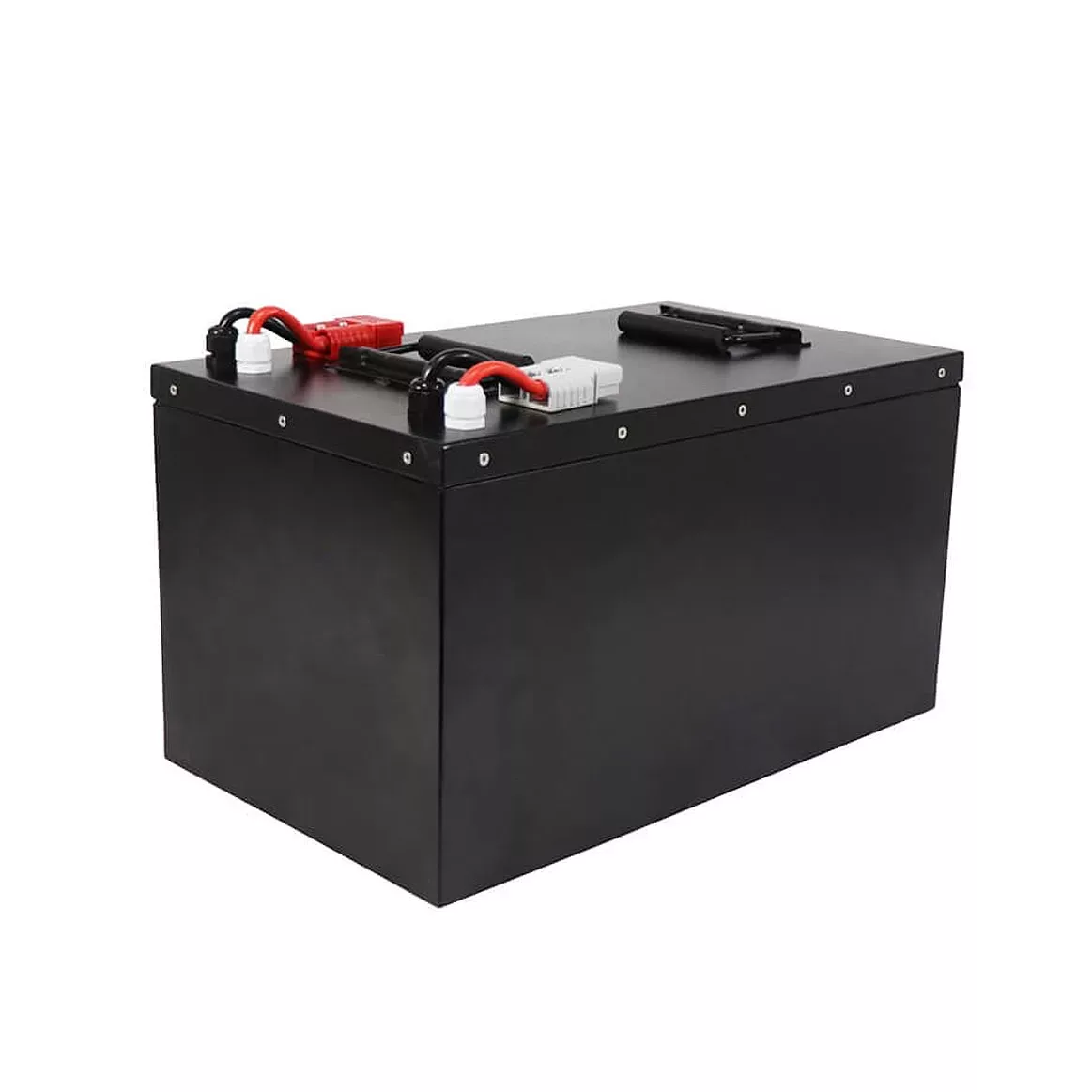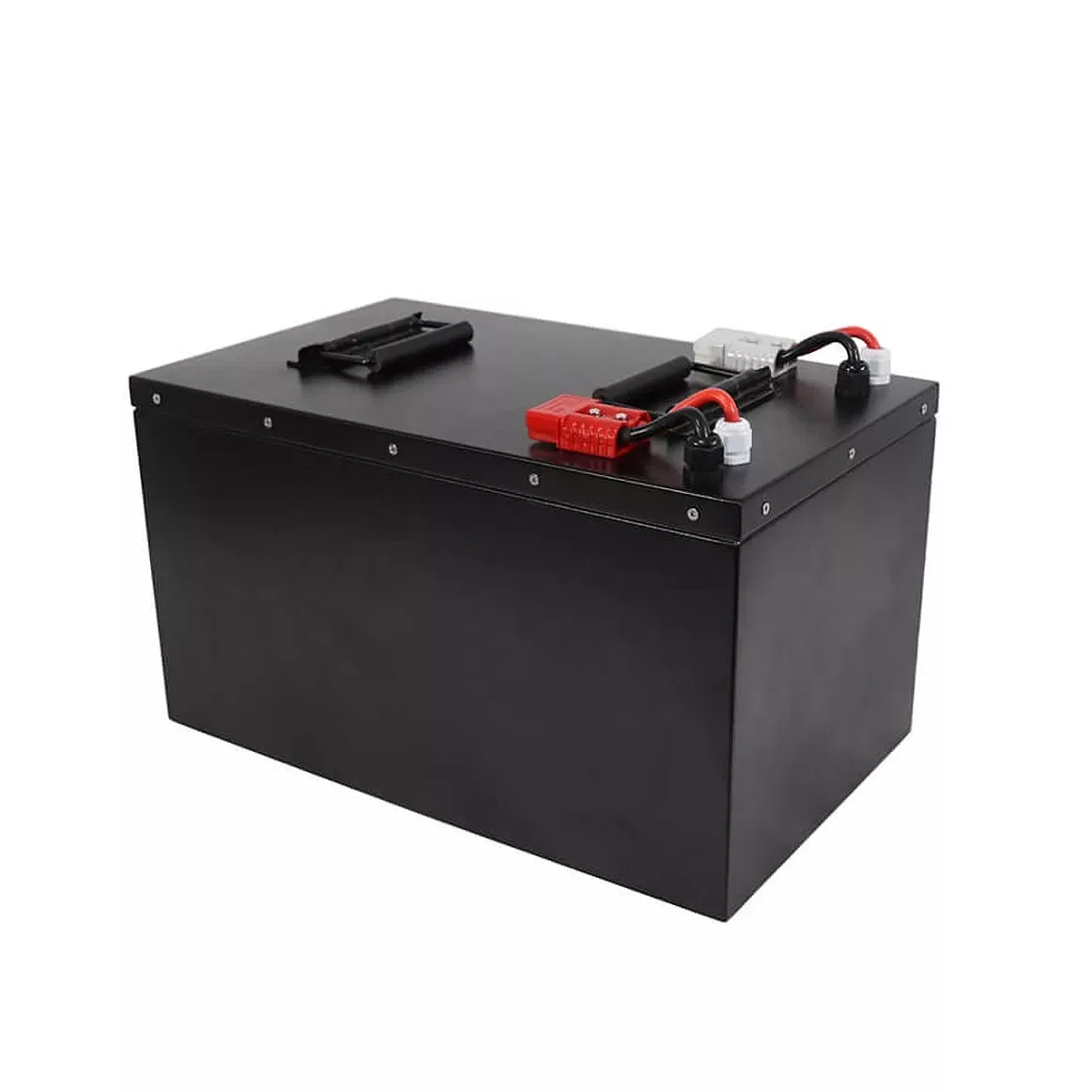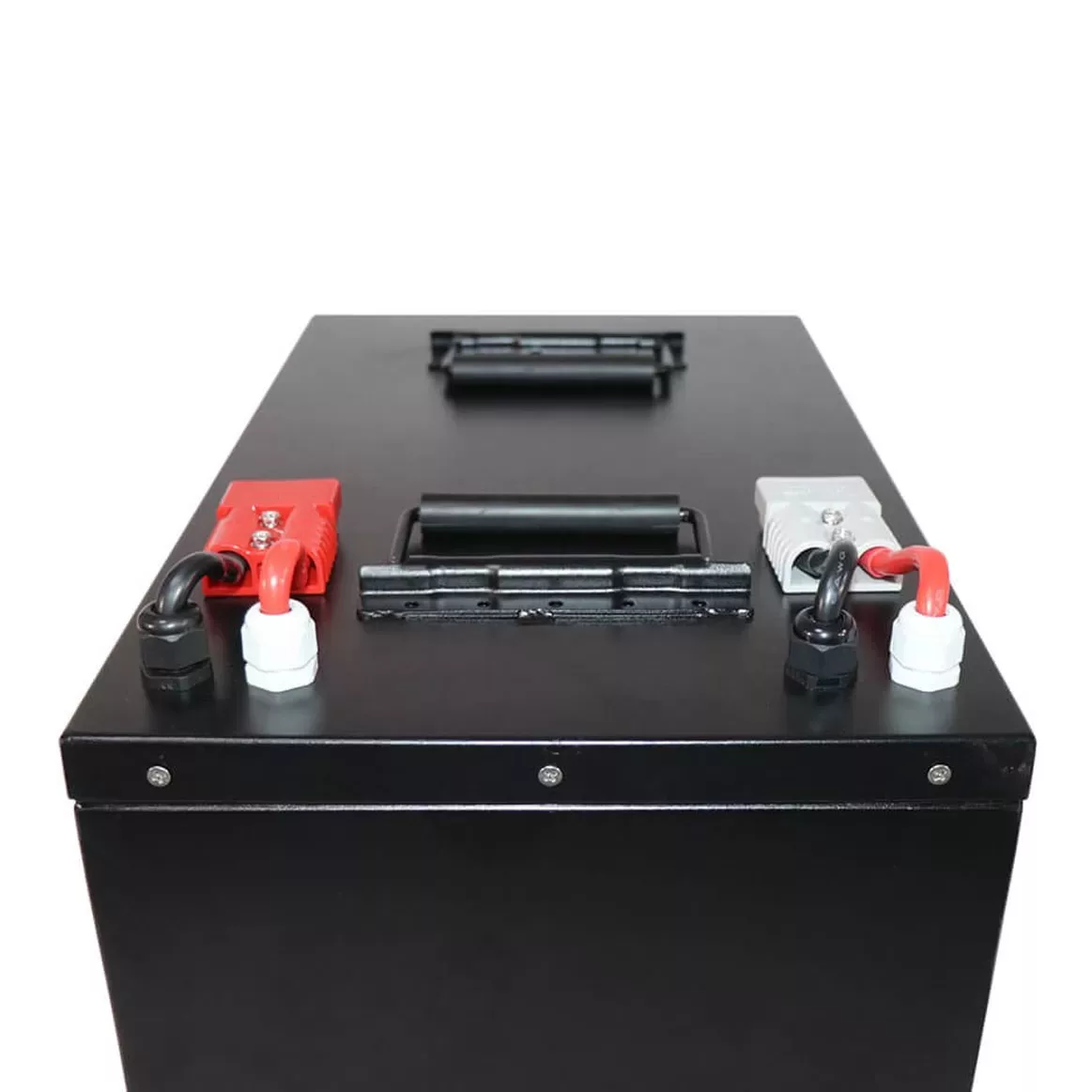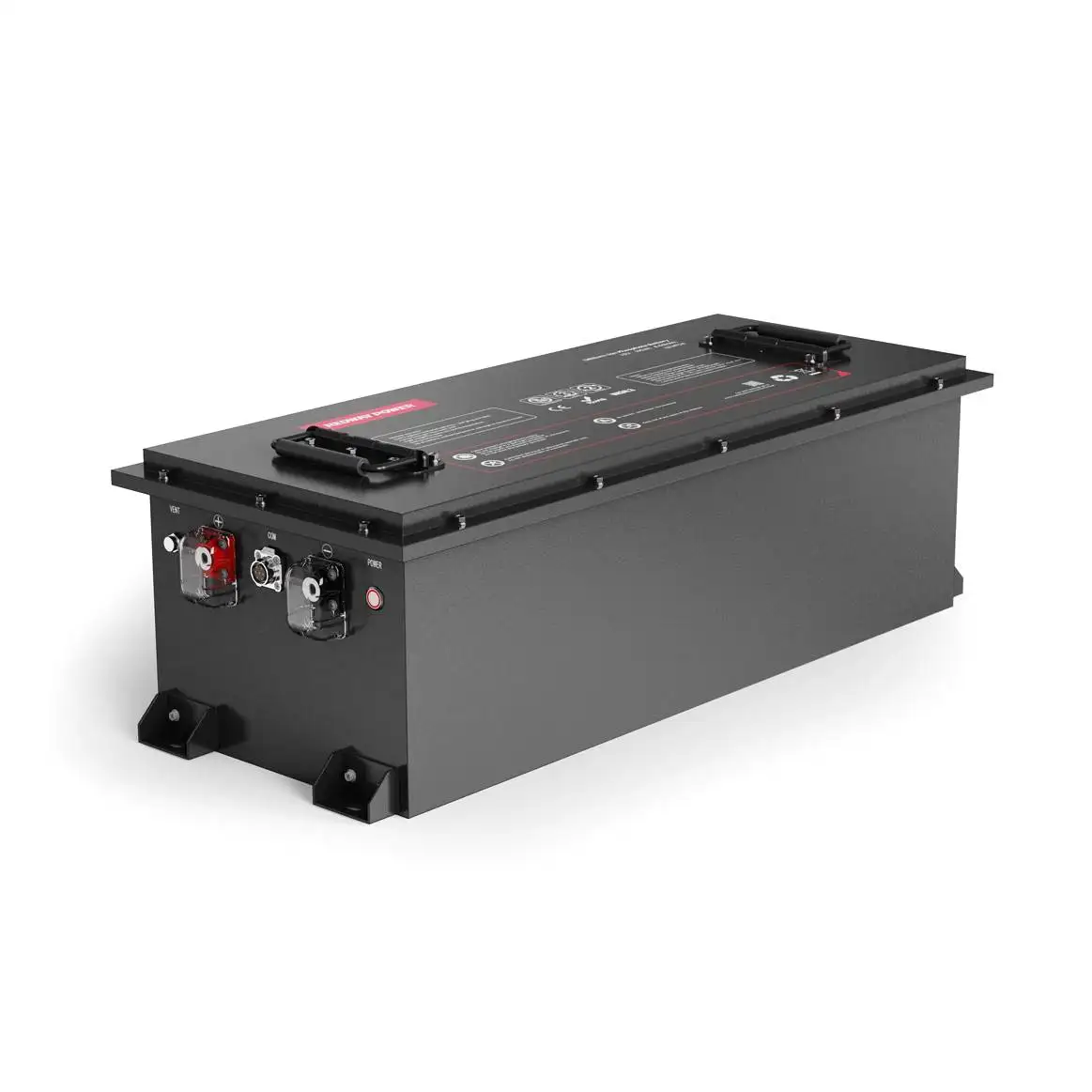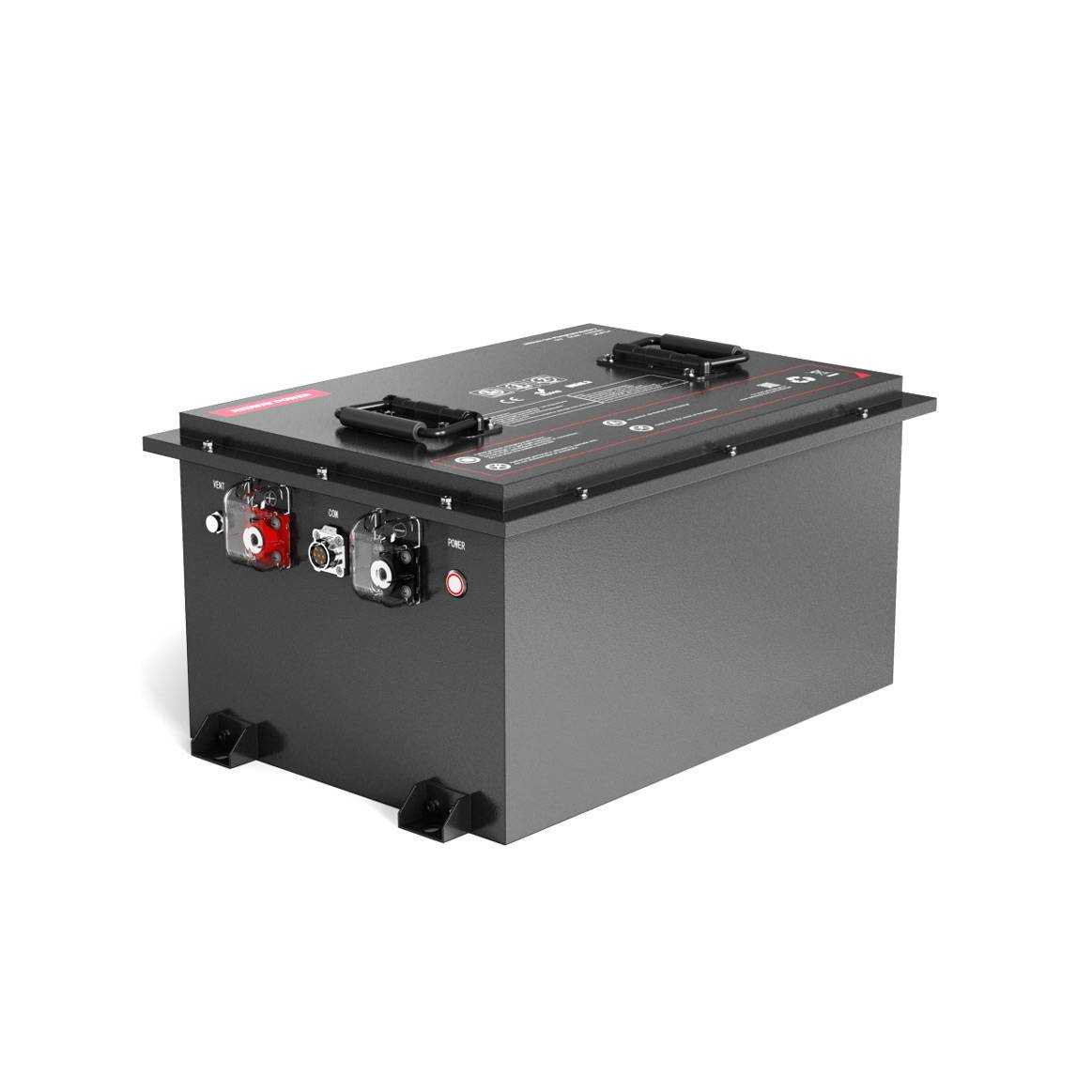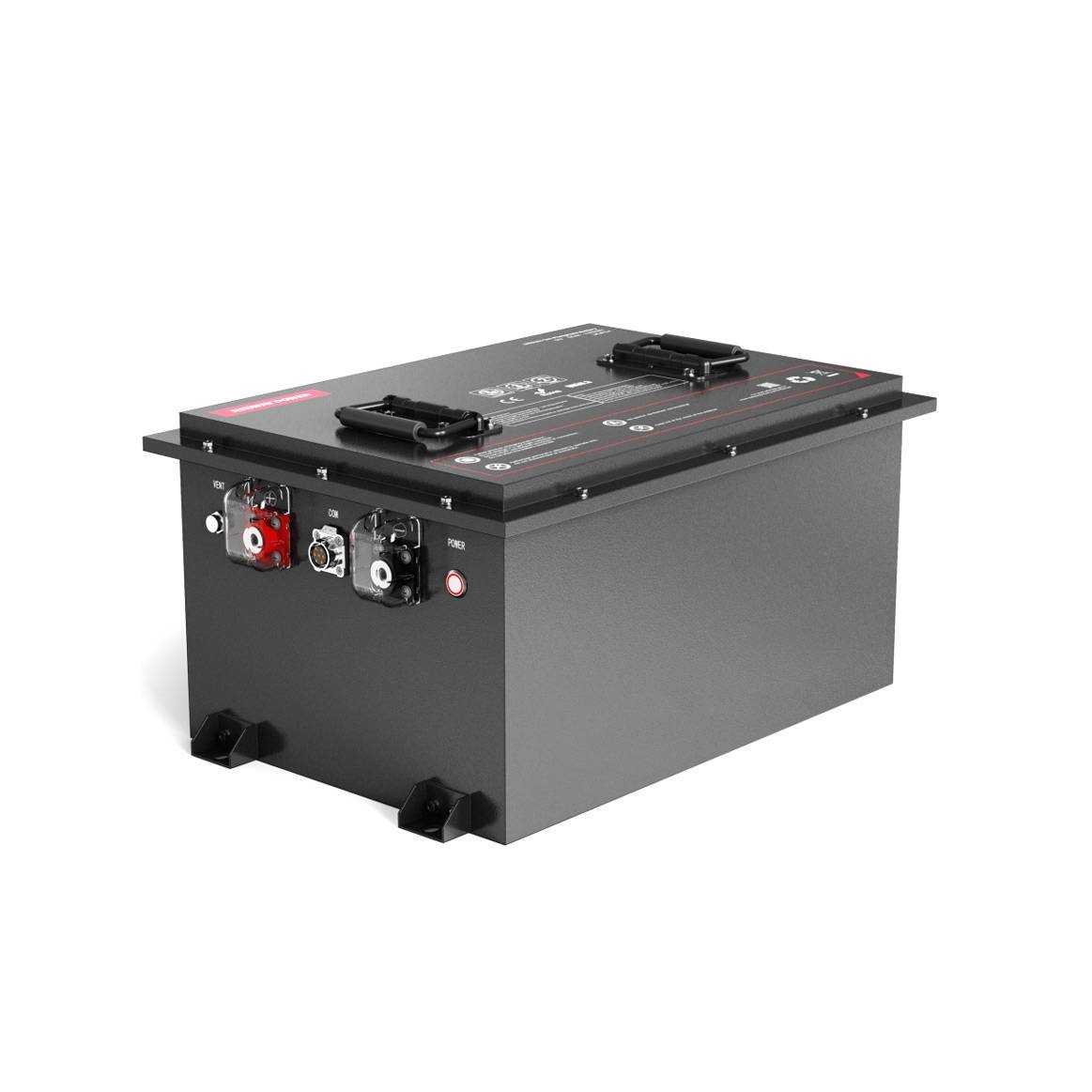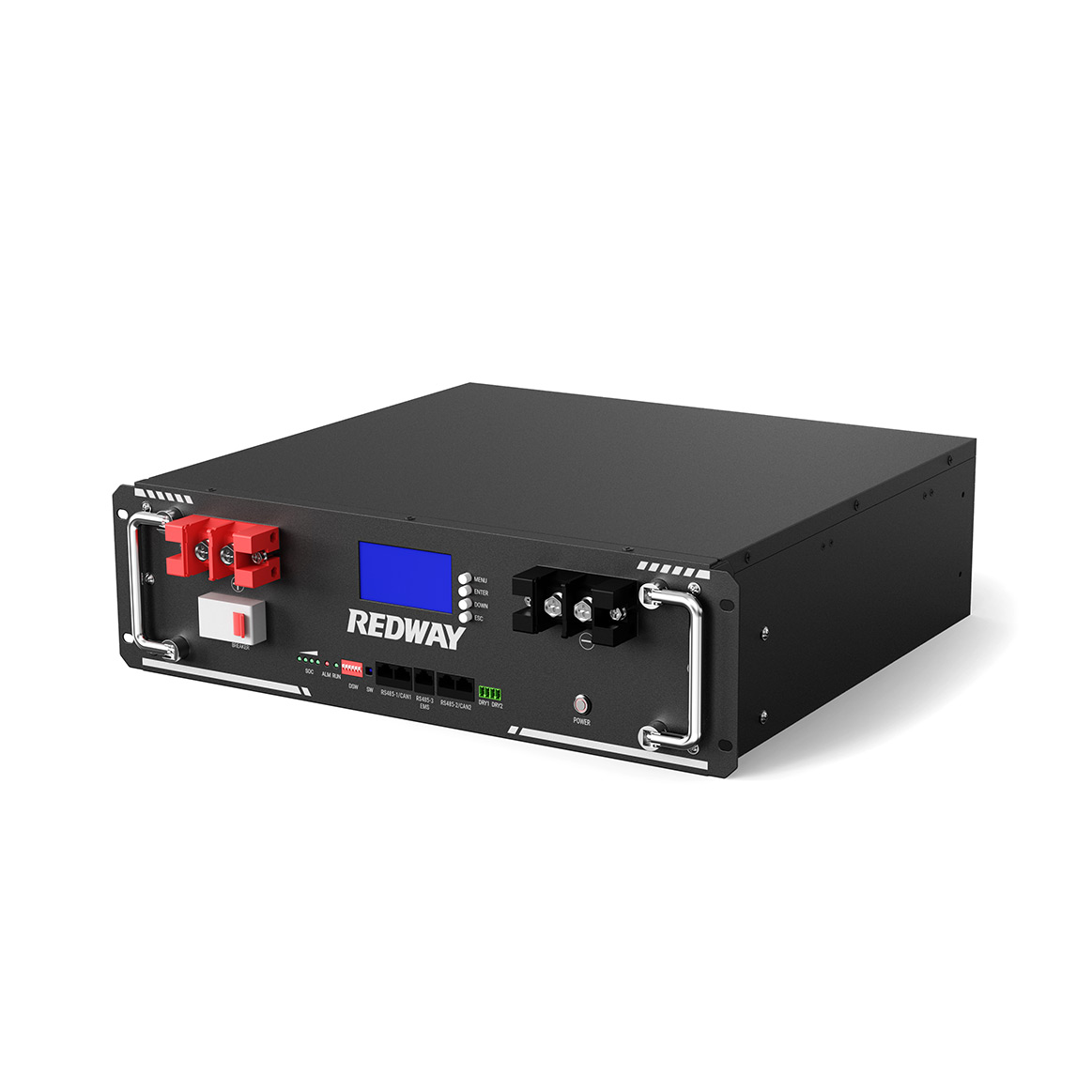Description
The 60V 100Ah LiFePO4 battery is designed for reliable, long-lasting power in a compact form. Perfect for electric vehicles, industrial equipment, and energy storage systems, this battery combines advanced safety, robust construction, and a suite of smart features for versatile use.
Key Specifications
Lithium Cell: LiFePO4 (LFP)
Nominal Voltage: 60.8V
Nominal Capacity: 100Ah
Nominal Energy: 6.08kWh
Max Charge Voltage: 69.35V
Discharge Cut-off Voltage: 47.5V
Max Continuous Charge Current: 100A
Max Continuous Discharge Current: 100A
Peak Discharge Current: 200A (10 seconds)
Cycle Life: Over 5000 cycles at 80% DOD (0.5C)
Design Life: 10 years
IP Rating: IP66
Max Parallel Connections: Up to 4 units
Internal Cells Series: 19
Internal Resistance: ≤10mΩ
Self-Discharge: 3% per month
Physical Details
Dimensions (L × W × H): 500 × 298 × 349 mm (19.7 × 11.7 × 13.7 inches)
Weight: 63 kg (139 lbs)
Terminal: Anderson Connector
Battery Shell: Metal
Operating Conditions
Charge Temperature: 0°C to 60°C
Discharge Temperature: -20°C to 65°C
Storage Temperature (1 Month): -20°C to 45°C
Storage Temperature (1 Year): 0°C to 35°C
Smart Features & Upgrades (Optional)
Bluetooth
Self-heating, LCD Display, 4G, GPS, RS485, RS232, CAN-bus, RJ45, Active Balance, Cooling Fan, Power Switch, Circuit Breaker, Solar MPPT, and more
BMS & Safety
BMS: JBD / DALY BMS
Power Switch: Yes
Charging Details
Standard Charge Current: 40A (5 hours)
Certifications
UL 1642, IEC 62619, CE, MSDS, UN38.3
Additional Information
Warranty: 3 years
Silkscreen / Label / Laser Logo: Yes
User Manual: Yes
OEM / ODM: Yes
Shipment: Yes
This 60V 100Ah LiFePO4 battery delivers dependable energy, advanced protection, and flexible integration for a wide range of applications.
Know More
Why Choose a 60V 100Ah Lithium Battery Factory for B2B OEM Solutions?
A 60V 100Ah lithium battery factory delivers high-capacity, long-life, and customizable energy solutions for electric vehicles, industrial automation, and renewable storage. Redway Battery leads the market with advanced BMS, robust OEM/ODM capabilities, and global support, making these batteries the top choice for B2B clients seeking reliability and tailored integration.
What defines a 60V 100Ah lithium battery for B2B OEM applications?
A 60V 100Ah lithium battery is a high-capacity, rechargeable energy storage unit utilizing LiFePO4 chemistry, offering 6.08 kWh of energy. Designed for B2B and OEM integration, it features advanced BMS, robust metal casing, and supports communication protocols like CAN-bus and RS485, ensuring seamless monitoring, safety, and adaptability for diverse industrial and mobility applications.
Chart: 60V 100Ah Lithium Battery Key Specifications
| Feature |
Value |
| Nominal Voltage |
60.8V |
| Capacity |
100Ah |
| Energy |
6.08 kWh |
| Cycle Life |
4,000–15,000 cycles |
| Weight |
63–93 kg |
| IP Rating |
IP65–IP67 |
| BMS |
Smart/Customizable |
| OEM/ODM |
Supported |
How does a 60V 100Ah lithium battery compare to lead-acid alternatives?
A 60V 100Ah lithium battery offers far superior cycle life, energy density, and efficiency than traditional lead-acid batteries. Lithium batteries last up to 10 years, provide consistent power, charge faster, and require no maintenance. Their lighter weight and compact size make them ideal for electric vehicles and industrial automation, reducing downtime and operational costs.
Why is BMS crucial in 60V 100Ah lithium batteries for OEMs?
A Battery Management System (BMS) is vital for protecting lithium batteries from overcharge, over-discharge, overheating, and short circuits. For OEMs, advanced BMS ensures safety, balances cells, and enables real-time monitoring via protocols like CAN-bus or Bluetooth. Redway Battery’s smart BMS options support integration, diagnostics, and remote management, maximizing uptime and battery longevity.
What applications benefit most from 60V 100Ah lithium batteries?
These batteries power electric motorcycles, scooters, tricycles, AGVs, AMRs, forklifts, and renewable energy storage systems. Their high output, deep cycling ability, and rugged design make them ideal for logistics, industrial automation, mobility fleets, and backup power—where reliability, long life, and fast charging are essential for business continuity.
How customizable are 60V 100Ah lithium batteries for B2B OEM clients?
Redway Battery and other leading factories offer extensive OEM/ODM customization, including adjustments to voltage, capacity, dimensions, BMS features, communication protocols, and branding. This ensures seamless integration into unique vehicle platforms, industrial robots, or energy systems, tailored to each client’s technical and operational requirements.
What are the safety and certification standards for 60V 100Ah lithium batteries?
Top-tier factories provide batteries certified to IEC62619, UL1642, CE, RoHS, FCC, UN38.3, and MSDS standards. These certifications ensure safe transport, installation, and operation worldwide, reducing risk for B2B clients and supporting regulatory compliance in global markets. Redway Battery’s rigorous quality control guarantees reliable and safe products.
How does the performance of 60V 100Ah lithium batteries impact ROI for B2B buyers?
While the upfront cost of lithium batteries is higher, their long lifespan (up to 15,000 cycles), low maintenance, and high efficiency deliver a lower total cost of ownership. Businesses benefit from fewer replacements, less downtime, and increased productivity, resulting in a compelling ROI over the battery’s operational life.
Chart: Lithium vs. Lead-Acid Battery Performance
| Aspect |
60V 100Ah LiFePO4 |
60V 100Ah Lead-Acid |
| Cycle Life |
4,000–15,000 |
500–1,000 |
| Usable Capacity |
100% |
50–60% |
| Maintenance |
None |
Frequent |
| Weight |
63–93 kg |
120–150 kg |
| Charging Time |
2–4 hours |
8–12 hours |
Who are the leading manufacturers and what sets Redway Battery apart?
Redway Battery, established in 2012, is a global leader in lithium battery innovation and OEM/ODM solutions. With advanced engineering, strict QC, and a portfolio of certifications, Redway delivers customizable, high-performance 60V 100Ah lithium batteries for B2B clients in China, Europe, Southeast Asia, and beyond. Their expertise in integration, rapid delivery, and technical support distinguishes them in the marketplace.
Can a 60V 100Ah lithium battery be integrated with smart monitoring and IoT?
Yes, modern 60V 100Ah lithium batteries support integration with smart monitoring systems via Bluetooth, WiFi, CAN-bus, RS485, GPS, and mobile apps. This enables real-time diagnostics, remote management, and predictive maintenance—critical for industrial automation, fleet management, and energy systems. Redway Battery offers these features as standard or optional upgrades.
What delivery, MOQ, and support terms can B2B buyers expect from factories?
Factories like Redway Battery typically offer low MOQs (as few as 1–5 units), 20–25 day delivery, and global shipping by sea, air, or land. Comprehensive after-sales support, technical consultation, and warranty (5–10 years) are standard, ensuring B2B clients receive reliable, ongoing service and rapid resolution of any issues.
Redway Battery Expert Views
“Redway Battery’s 60V 100Ah lithium solutions are engineered for OEMs and B2B partners who demand safety, performance, and seamless integration. Our smart BMS, flexible customization, and global support empower clients to innovate in electric mobility, automation, and energy storage. We’re committed to powering the future of industry with reliability and expertise.”
Conclusion
A 60V 100Ah lithium battery from a reputable factory like Redway Battery offers unmatched energy density, safety, and flexibility for B2B and OEM clients. With advanced BMS, robust certifications, and full customization, these batteries drive innovation in electric vehicles, industrial automation, and renewable energy—delivering value, reliability, and global support.
FAQs
What is the typical cycle life of a 60V 100Ah lithium battery?
Depending on depth of discharge, cycle life ranges from 4,000 to 15,000 cycles, ensuring long-term reliability.
Can I customize the battery for my specific vehicle or equipment?
Yes, leading factories like Redway Battery offer OEM/ODM services to tailor battery size, capacity, BMS features, and communication protocols.
How long does it take to charge a 60V 100Ah lithium battery?
Standard charging takes 2–4 hours; fast charging options are available for higher efficiency.
What certifications should I look for in a 60V 100Ah lithium battery?
Look for IEC62619, UL1642, CE, RoHS, FCC, UN38.3, and MSDS for global safety and quality compliance.
Why choose Redway Battery for B2B lithium battery solutions?
Redway Battery delivers high-quality, customizable batteries with advanced BMS, global logistics, and expert support for B2B and OEM clients worldwide.


